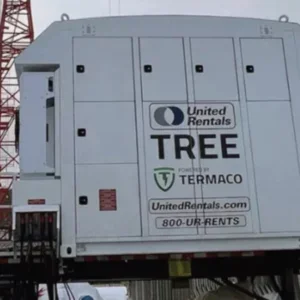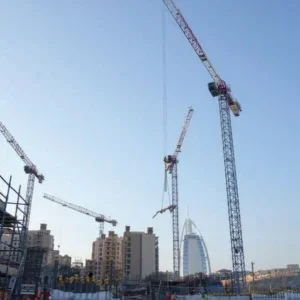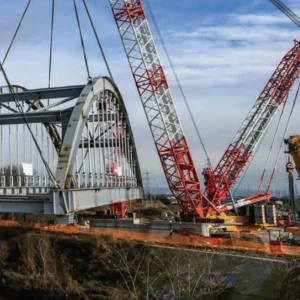For United States workers, including crane operators, engineers and other crane related jobs, getting old is about to get old.
According to a recent report by the Raleigh, NC-based construction-consulting firm FMI Corporation, and statistics from the United States Department of Labor Statistics (BLS), as the American Baby Boom generation retires out of the workforce (the oldest boomers are now 65-years-old) the US will be left with an estimated 2.5m-person employment gap by 2012.
Not unlike the dotcom boom of the 1990s, employers will be forced to scramble for labour and it will be the smart, savvy, forward thinking companies who will stay ahead of the curve to recruit and retain valuable employees.
Peter Juhren, national service manager for Morrow Equipment Company, agrees. “We’ve been suffering for the past eighteen months attempting to hire skilled, qualified people,” he says. They’re currently running short of crane and hoist service technicians. Over the past two years, Morrow’s fleet has expanded to include 160 construction hoists on top of about 500 cranes.
Juhren says they began their recruitment program nine years ago in anticipation of a worker shortage. “We began to recruit, hire and train service technicians aggressively in our company,” he says. But, it has become even more difficult to get the people they need to maintain their workforce. “I do work with a recruiter who is very keen to the needs or our business,” he says. He added former military personnel who have chosen not to re-enlist are great sources of labour.
“We hire from all branches of the military from the Army to the Air Force,” he says. The greatest benefit of recruiting from the military, Juhren says, is that “they have outstanding technical training and the industry experience. Furthermore, they come to us very well trained and disciplined and can easily adapt to our corporate policies and procedures.”
Juhren says looking ahead at the next five years they’ll continue to seek out quality people who are looking at careers in the crane business. “The crane business isn’t for everyone,” he says. “There’s really no middle ground we’ve found, you either love it or hate it.”
He says that Morrow really has not had much luck recruiting from colleges, even though there is a plethora of technical people available. “It’s not just that we need techs, but it’s the personality of the techs as well,” he says. He says their people must have the constitution to work in all weather conditions and that takes more than just technical skill.
While some companies use the old standby of hiring workers away from their competitors, Juhren says Morrow avoids that tactic. “We typically don’t look at employees from other companies unless they come to us first,” he says. “Different companies have their own work policies and procedures and those workers can pick up habits that don’t fit into our company profile.”
It’s very difficult to retrain or unlearn bad habits, Juhren says. “We’re better off getting the apples from the tree instead of the barrel.” Morrow’s training programme in Salem, Oregon can run anywhere from nine months to three years, depending on the person. The company also sends employees in a partnership programme with Liebherr to Biberach, Germany. “Between the two, we’re really teaching these guys the proper methods to become successful,” Juhren says.
Morrow isn’t the only company currently feeling the labour pinch. All Erection and Crane Rental Corp also reports it is short on operators and drivers. “Across the board, with so many big construction jobs going on all over the country it’s difficult to find qualified people. Like everyone else in the industry right now, we’re very busy,” says Michael Liptak, president of ALL Erection.
Liptak says that All is a firm believer in constant improvement, whether it’s in its people, equipment, or finding a better way to do things. “To meet the labour challenge, we do what we actually always do: look for good people to hire, give them the best training, and give them every opportunity to develop their skills and grow with our company,” he says.
He says that his philosophy is that experience is everything. “Among our staff, we have crane industry veterans of 40 or more years with a wealth of knowledge that you can’t get just in a training class,” he says. “We pair up our new hires with these seasoned veterans to learn the ropes. They know that when they learn from the best, they are getting experience like no other. By creating a quality work environment—and with some luck—our young hires will likely become our forty-year veterans decades from now.”
Taking advantage of operator training is essential especially when market conditions create a demand for qualified workers. Graham Brent, Director of the National Commission for the Certification of Crane Operators, says demand is rising for operators. “I’ve heard of labour issues out there,” Brent says. “When you have a lot of work around you get more demand for certified operators and it’s not clear to what extent the demand is being met.”
Labour consultant Katherine Green, president of Green Consulting, says that the labour shortage could happen in the next five years, although there is a critical uncertainty about exactly when the baby boom generation will retire.
As life expectancy has improved, many 50- and 60-year-olds are choosing to continue to work. “People are delaying retirement or changing jobs within their industry.” Green advises that businesses should try to hold on to older staff. According to Green, younger workers can cost companies lots of money in recruitment costs, especially if they are not committed to stay for the long term. “There’s a mismatch between what’s there and what people are thinking might be there,” Green says. “What I’m seeing, if companies are going after the 50-plus crowd, smart companies will keep those folks and use their brainpower rather than overly invest in the youth movement.”
It’s a problem that many companies doubt that over-50 employees are ‘viable assets’–they can still put in 20 years of work, Green points out. But they have different needs than younger employees. “With the over 40 crowd, it’s just not about money anymore,” Green says. “The older they get the less oversight they need, and they don’t like to be told what to do.”
On the other hand, having grown up during the Civil Rights era, they are less familiar with mixing with people from different backgrounds than younger generations, Green says. “Generation X and Y [those born after 1964 and the post-World War II baby boom] don’t even separate race or ethnic groups, there are no racial issues with them,” Green says. “This has been completely revamped. If you look at 20-something demographics, they’re filled with the melting pot mix of people. It’s the over-50 crowd who calls this ‘diversity,’” she says.
People are retiring in different ways than before, by working reducing hours or asking for more flexible schedules, Green says. “Oftrn, they want work-life balance back and that will be a big draw with recruitment strategy,” Green says.
For crane operators and riggers, physical fitness soon starts to become an issue. Many older workers may be forced out of the workplace due to advanced age and the requirements of being able to safely handle the physical demands of operating heavy construction equipment. “As we age, older workers rely on ‘brains over brawn,’” Green says. “However, that won’t work in the construction or other physically intensive industries. Older adults compensate for physical loss since they can think about a problem rather than physically work it.”
Before putting those workers out to pasture however, Green advises shifting them to advisory positions where they can teach their younger, more inexperienced replacements. Green says she expects this mentoring process to become more popular in the next few years. “Leadership development used to be intense but then slowed down,” Green says. Now, with retirement looming, older staff on those programmes will come back and work with youngsters in lower level positions, we anticipate a lot more executive consulting will take place.”
A key group of workers in North America are preparing to retire, leaving a potentially large skills gap A key group of workers in North America are preparing to retire No matter how fit, older workers tend to use mental skills to compensate for changing physical fitness Older workers tend to use mental skills to compensate for changing physical fitness






